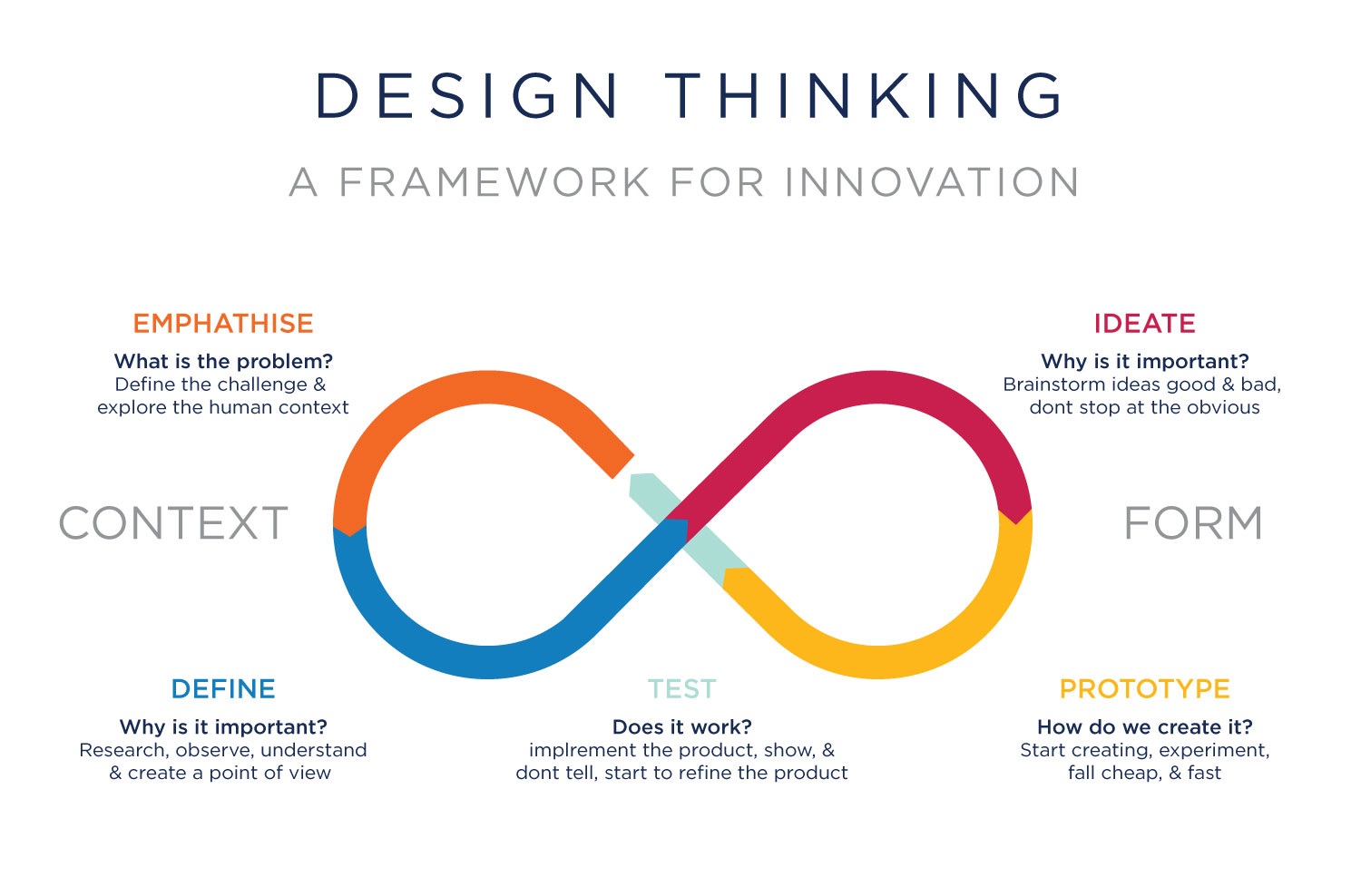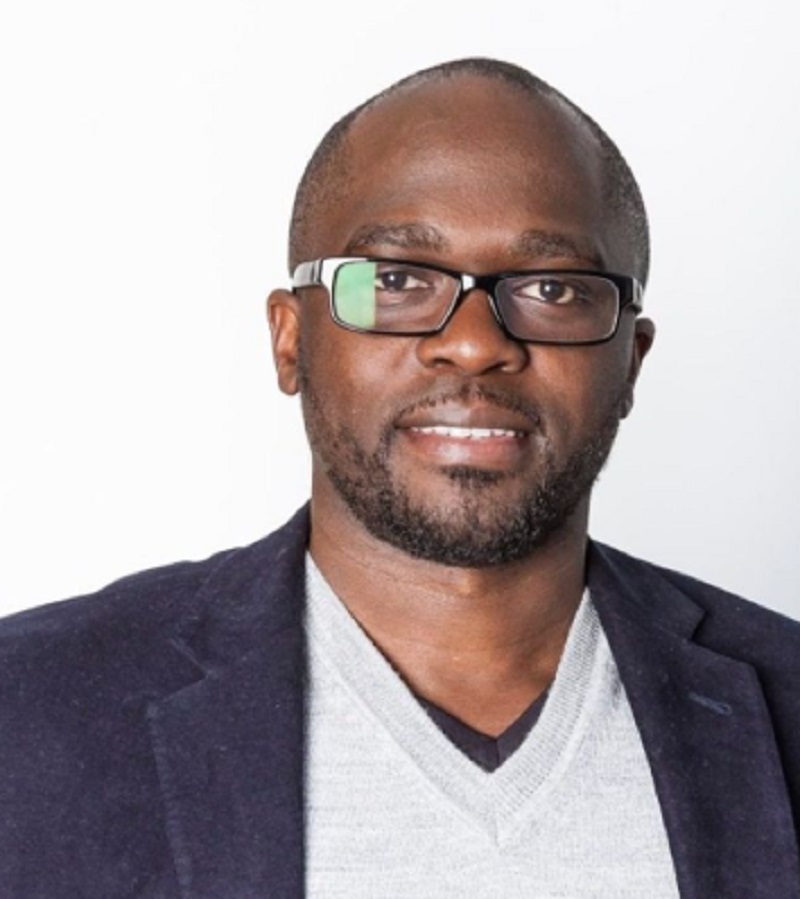Feature/OPED
How to Validate Start-up Ideas With Design Thinking

By Otori Emmanuel
Innovators are concerned about building a product that will have a huge impact on the lives of people by increasing the quality of living standards, addressing a pain point or an alternative that is cost-effective for its consumers.
With these great thoughts comes a big question that has to be answered before launching a product or service and it is the question of “is there a market”?
The addressable market size becomes a question to answer in order to ensure that when a product is manufactured, it will find users or consumers who are willing to utilize the product based on the offer that is being given.
One of the techniques that most successful start-ups in the world has applied to ascertain whether a product will sell or not is called Design Thinking.
Leading Change
One of the failures is the assumption that there is a market, is one that can be seen or witnessed in solutions that have been made for people. An example is the construction of an overhead bridge for pedestrians to avoid crossing the expressway. However, the humans who this provision has been made for usually ignore the bridge and use the expressway to connect to their routes, which even makes their transit riskier than the use of the overhead bridge.
Why would anywhere risk their lives to cross an expressway when there is an overhead bridge beside them?
Failure in the consideration of what would drive people to use the overhead bridge is what is lacking and why the preference for the use of the expressway.
Would these same people use the overhead bridge if there were possible factors considered before making the designs? The answer is an absolute yes. The failure in the use of the overhead bridge is driven by the fact that the normal tendencies of human behaviour were not considered before constructing the bridge.
Human-Centred Design
Design thinking takes into consideration the natural tendencies of human behaviour before designing a solution. This will ensure shared responsibility from both parties such that there is already a market with reasonable demand to capture a market share that can sustain the business when eventually presented to the users. The failure of most start-up ideas is embedded in the emotional attachment that founders have to their ideas which makes it difficult for them to be open to feedback from prospective users. However, a fact-based finding should be prioritized against emotions when creating a solution.
How Design Thinking Drives Innovation
There are five stages in the design thinking process
- Empathize
Being able to empathize with customers most especially when it is a challenge or pain point that makes the purchasing or usage of a product or service difficult for them gives an opportunity to learn closely from them as it then creates an attitude that makes them become difficult customers because there are bottlenecks that hinders the what they expect to be an ideal purchasing process. Customers also have a reference point of a better offering and would always voice out. Active listening to their challenges becomes great feedback for start-ups. This stage consists of interviews in getting to know what the ideal scenario is for prospective customers.
- Define
Having interviewed the prospects, it then becomes necessary to begin to define what the challenges are from all the opinions gathered from several interviews conducted with stakeholders. The age group of those facing these challenges, their income level, experience, education and location becomes parameters to pay attention to.
- Ideate
The aim of conducting interviews and surveys by visiting the field is to be able to generate a product or service that has a fit for the market. All the feedback that has been given now needs to undergo divergent or convergent processes where divergent takes the several opinions and create solutions around them while convergent thinking helps to narrow down to the best idea. These two thought processes help to come up with what the proposed solution to be developed would be.
- Prototype
Prototyping involves making a Minimum Viable Product (MVP), a minimum viable product is one that is made with the minimum resources in order to furthermore see how customers interact with the product or service in its pilot or beta phase. The feedback from the usage and engagement would then help to determine whether a full product would be manufactured or not. For digital products such as web or mobile apps, tools such as Figma or Adobe XD can be used to make a prototype.
- Test
The testing stage helps to pick the ideas that work and move very fast to implement them. If there are impediments or bugs, then it has to be corrected. When the product passes the testing stage, a complete product category can now be created and ready to make entry into the market.
The first two stages in the process of design thinking help to look out for evidence by carrying out Primary Market Research (PMR) to ascertain by means of qualitative and quantitative analysis the fact there are pieces of evidence to either support whether a challenge really exists or not for a solution to be created.
Founders should learn to embrace what the primary market research presents in order to avoid losing big as a result of the assumptions of what they either expect the market to be or their emotional connection to the product.
Emmanuel Otori, the writer, has worked on the GEM Project of the World Bank, Conducted training for entrepreneurs and professionals at the Abuja Enterprise Agency and has over 8 years of experience working with over 50 SMEs across Nigeria. Please visit my LinkedIn profile here – https://www.linkedin.com/in/emmanuelotori/
Feature/OPED
The Future of Payments: Key Trends to Watch in 2025

By Luke Kyohere
The global payments landscape is undergoing a rapid transformation. New technologies coupled with the rising demand for seamless, secure, and efficient transactions has spurred on an exciting new era of innovation and growth. With 2025 fast approaching, here are important trends that will shape the future of payments:
1. The rise of real-time payments
Until recently, real-time payments have been used in Africa for cross-border mobile money payments, but less so for traditional payments. We are seeing companies like Mastercard investing in this area, as well as central banks in Africa putting focus on this.
2. Cashless payments will increase
In 2025, we will see the continued acceleration of cashless payments across Africa. B2B payments in particular will also increase. Digital payments began between individuals but are now becoming commonplace for larger corporate transactions.
3. Digital currency will hit mainstream
In the cryptocurrency space, we will see an increase in the use of stablecoins like United States Digital Currency (USDC) and Tether (USDT) which are linked to US dollars. These will come to replace traditional cryptocurrencies as their price point is more stable. This year, many countries will begin preparing for Central Bank Digital Currencies (CBDCs), government-backed digital currencies which use blockchain.
The increased uptake of digital currencies reflects the maturity of distributed ledger technology and improved API availability.
4. Increased government oversight
As adoption of digital currencies will increase, governments will also put more focus into monitoring these flows. In particular, this will centre on companies and banks rather than individuals. The goal of this will be to control and occasionally curb runaway foreign exchange (FX) rates.
5. Business leaders buy into AI technology
In 2025, we will see many business leaders buying into AI through respected providers relying on well-researched platforms and huge data sets. Most companies don’t have the budget to invest in their own research and development in AI, so many are now opting to ‘buy’ into the technology rather than ‘build’ it themselves. Moreover, many businesses are concerned about the risks associated with data ownership and accuracy so buying software is another way to avoid this risk.
6. Continued AI Adoption in Payments
In payments, the proliferation of AI will continue to improve user experience and increase security. To detect fraud, AI is used to track patterns and payment flows in real-time. If unusual activity is detected, the technology can be used to flag or even block payments which may be fraudulent.
When it comes to user experience, we will also see AI being used to improve the interface design of payment platforms. The technology will also increasingly be used for translation for international payment platforms.
7. Rise of Super Apps
To get more from their platforms, mobile network operators are building comprehensive service platforms, integrating multiple payment experiences into a single app. This reflects the shift of many users moving from text-based services to mobile apps. Rather than offering a single service, super apps are packing many other services into a single app. For example, apps which may have previously been used primarily for lending, now have options for saving and paying bills.
8. Business strategy shift
Recent major technological changes will force business leaders to focus on much shorter prediction and reaction cycles. Because the rate of change has been unprecedented in the past year, this will force decision-makers to adapt quickly, be decisive and nimble.
As the payments space evolves, businesses, banks, and governments must continually embrace innovation, collaboration, and prioritise customer needs. These efforts build a more inclusive, secure, and efficient payment system that supports local to global economic growth – enabling true financial inclusion across borders.
Luke Kyohere is the Group Chief Product and Innovation Officer at Onafriq
Feature/OPED
Ghana’s Democratic Triumph: A Call to Action for Nigeria’s 2027 Elections

In a heartfelt statement released today, the Conference of Nigeria Political Parties (CNPP) has extended its warmest congratulations to Ghana’s President-Elect, emphasizing the importance of learning from Ghana’s recent electoral success as Nigeria gears up for its 2027 general elections.
In a statement signed by its Deputy National Publicity Secretary, Comrade James Ezema, the CNPP highlighted the need for Nigeria to reclaim its status as a leader in democratic governance in Africa.
“The recent victory of Ghana’s President-Elect is a testament to the maturity and resilience of Ghana’s democracy,” the CNPP stated. “As we celebrate this achievement, we must reflect on the lessons that Nigeria can learn from our West African neighbour.”
The CNPP’s message underscored the significance of free, fair, and credible elections, a standard that Ghana has set and one that Nigeria has previously achieved under former President Goodluck Jonathan in 2015. “It is high time for Nigeria to reclaim its position as a beacon of democracy in Africa,” the CNPP asserted, calling for a renewed commitment to the electoral process.
Central to CNPP’s message is the insistence that “the will of the people must be supreme in Nigeria’s electoral processes.” The umbrella body of all registered political parties and political associations in Nigeria CNPP emphasized the necessity of an electoral system that genuinely reflects the wishes of the Nigerian populace. “We must strive to create an environment where elections are free from manipulation, violence, and intimidation,” the CNPP urged, calling on the Independent National Electoral Commission (INEC) to take decisive action to ensure the integrity of the electoral process.
The CNPP also expressed concern over premature declarations regarding the 2027 elections, stating, “It is disheartening to note that some individuals are already announcing that there is no vacancy in Aso Rock in 2027. This kind of statement not only undermines the democratic principles that our nation holds dear but also distracts from the pressing need for the current administration to earn the trust of the electorate.”
The CNPP viewed the upcoming elections as a pivotal moment for Nigeria. “The 2027 general elections present a unique opportunity for Nigeria to reclaim its position as a leader in democratic governance in Africa,” it remarked. The body called on all stakeholders — including the executive, legislature, judiciary, the Independent National Electoral Commission (INEC), and civil society organisations — to collaborate in ensuring that elections are transparent, credible, and reflective of the will of the Nigerian people.
As the most populous African country prepares for the 2027 elections, the CNPP urged all Nigerians to remain vigilant and committed to democratic principles. “We must work together to ensure that our elections are free from violence, intimidation, and manipulation,” the statement stated, reaffirming the CNPP’s commitment to promoting a peaceful and credible electoral process.
In conclusion, the CNPP congratulated the President-Elect of Ghana and the Ghanaian people on their remarkable achievements.
“We look forward to learning from their experience and working together to strengthen democracy in our region,” the CNPP concluded.
Feature/OPED
The Need to Promote Equality, Equity and Fairness in Nigeria’s Proposed Tax Reforms

By Kenechukwu Aguolu
The proposed tax reform, involving four tax bills introduced by the Federal Government, has received significant criticism. Notably, it was rejected by the Governors’ Forum but was still forwarded to the National Assembly. Unlike the various bold economic decisions made by this government, concessions will likely need to be made on these tax reforms, which involve legislative amendments and therefore cannot be imposed by the executive. This article highlights the purposes of taxation, the qualities of a good tax system, and some of the implications of the proposed tax reforms.
One of the major purposes of taxation is to generate revenue for the government to finance its activities. A good tax system should raise sufficient revenue for the government to fund its operations, and support economic and infrastructural development. For any country to achieve meaningful progress, its tax-to-GDP ratio should be at least 15%. Currently, Nigeria’s tax-to-GDP ratio is less than 11%. The proposed tax reforms aim to increase this ratio to 18% within the next three years.
A good tax system should also promote income redistribution and equality by implementing progressive tax policies. In line with this, the proposed tax reforms favour low-income earners. For example, individuals earning less than one million naira annually are exempted from personal income tax. Additionally, essential goods and services such as food, accommodation, and transportation, which constitute a significant portion of household consumption for low- and middle-income groups, are to be exempted from VAT.
In addition to equality, a good tax system should ensure equity and fairness, a key area of contention surrounding the proposed reforms. If implemented, the amendments to the Value Added Tax could lead to a significant reduction in the federal allocation for some states; impairing their ability to finance government operations and development projects. The VAT amendments should be holistically revisited to promote fairness and national unity.
The establishment of a single agency to collect government taxes, the Nigeria Revenue Service, could reduce loopholes that have previously resulted in revenue losses, provided proper controls are put in place. It is logically easier to monitor revenue collection by one agency than by multiple agencies. However, this is not a magical solution. With automation, revenue collection can be seamless whether it is managed by one agency or several, as long as monitoring and accountability measures are implemented effectively.
The proposed tax reforms by the Federal Government are well-intentioned. However, all concerns raised by Nigerians should be looked into, and concessions should be made where necessary. Policies are more effective when they are adapted to suit the unique characteristics of a nation, rather than adopted wholesale. A good tax system should aim to raise sufficient revenue, ensure equitable income distribution, and promote equality, equity, and fairness.
-

 Feature/OPED5 years ago
Feature/OPED5 years agoDavos was Different this year
-
Travel/Tourism8 years ago
Lagos Seals Western Lodge Hotel In Ikorodu
-

 Showbiz2 years ago
Showbiz2 years agoEstranged Lover Releases Videos of Empress Njamah Bathing
-

 Banking6 years ago
Banking6 years agoSort Codes of GTBank Branches in Nigeria
-

 Economy2 years ago
Economy2 years agoSubsidy Removal: CNG at N130 Per Litre Cheaper Than Petrol—IPMAN
-

 Banking2 years ago
Banking2 years agoFirst Bank Announces Planned Downtime
-

 Sports2 years ago
Sports2 years agoHighest Paid Nigerian Footballer – How Much Do Nigerian Footballers Earn
-

 Technology4 years ago
Technology4 years agoHow To Link Your MTN, Airtel, Glo, 9mobile Lines to NIN























